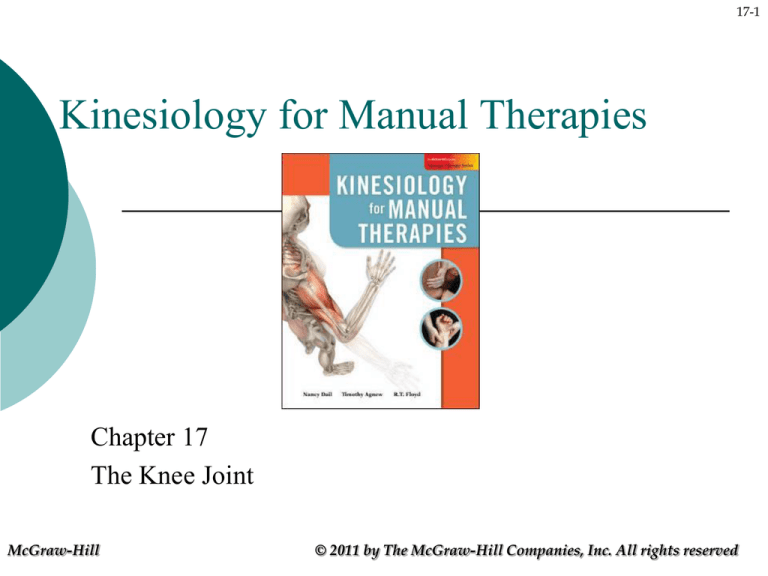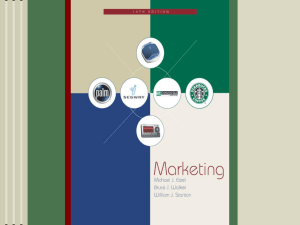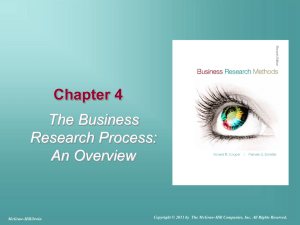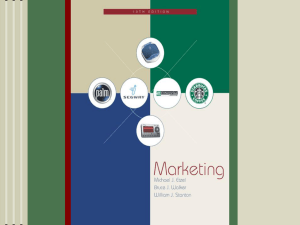
17-1
Kinesiology for Manual Therapies
Chapter 17
The Knee Joint
McGraw-Hill
© 2011 by The McGraw-Hill Companies, Inc. All rights reserved
17-2
Learning Outcomes
17-1 Define key terms.
o 17-2 Identify on a human skeleton
selected bony features of the knee
joint.
o 17-3 Describe the cartilaginous and
ligamentous structures of the knee
joint.
o
McGraw-Hill
© 2011 by The McGraw-Hill Companies, Inc. All rights reserved
17-3
Learning Outcomes (cont.)
McGraw-Hill
17-4 Draw and label on a skeletal
chart the muscles, including origins
and insertions, and ligaments of the
knee joint.
17-5 Palpate the superficial knee
joint structures and muscles,
including origins and insertions, on
a partner.
© 2011 by The McGraw-Hill Companies, Inc. All rights reserved
17-4
Learning Outcomes (cont.)
McGraw-Hill
17-6 Demonstrate all the active and
passive movements of the knee
joint with a partner.
17-7 Name and explain the actions
and importance of the quadriceps
and hamstring muscles.
© 2011 by The McGraw-Hill Companies, Inc. All rights reserved
17-5
Learning Outcomes (cont.)
McGraw-Hill
17-8 List and organize the muscles
that produce the movements of the
knee joint and list their antagonists.
17-9 Practice flexibility and
strengthening exercises for each
muscle group.
© 2011 by The McGraw-Hill Companies, Inc. All rights reserved
17-6
Introduction
The knee joint affects posture through the
position of the hip joint.
The knee joint is vulnerable to injuries.
The bone’s structure is designed to
provide mobility and weight bearing.
McGraw-Hill
© 2011 by The McGraw-Hill Companies, Inc. All rights reserved
17-7
Bones
The tops of the medial and lateral tibial
condyles are known as the medial and
lateral tibial plateaus.
The tibia bears most of the body’s
weight in the knee joint.
The fibula serves for an attachment site
for muscles and ligaments.
McGraw-Hill
© 2011 by The McGraw-Hill Companies, Inc. All rights reserved
17-8
Bones (cont.)
The patella is a sesamoid bone.
Key bony landmarks include the tibial
tuberosity, Gerdy’s tubercle, the medial
and lateral femoral condyles, and the
medial tibial condyle.
McGraw-Hill
© 2011 by The McGraw-Hill Companies, Inc. All rights reserved
17-9
Bones (cont.)
McGraw-Hill
© 2011 by The McGraw-Hill Companies, Inc. All rights reserved
17-10
Bones (cont.)
McGraw-Hill
© 2011 by The McGraw-Hill Companies, Inc. All rights reserved
17-11
Joints
The knee joint is the tibiofemoral joint
and is classified as a ginglymus joint
because it acts like a hinge performing
flexion and extension.
Ligaments provide stability for the knee
joint and the medial and lateral menisci
(cartilage) cushion the joint.
McGraw-Hill
© 2011 by The McGraw-Hill Companies, Inc. All rights reserved
17-12
Joints (cont.)
McGraw-Hill
© 2011 by The McGraw-Hill Companies, Inc. All rights reserved
17-13
Ligaments of the Knee Joint
The anterior cruciate ligament (ACL)
and posterior cruciate ligament (PCL)
are named because they cross within the
knee between the tibia and femur.
The ACL is often injured.
The medial knee has the tibial medial
collateral ligament (MCL)
McGraw-Hill
© 2011 by The McGraw-Hill Companies, Inc. All rights reserved
17-14
Ligaments of the Knee Joint (cont.)
The lateral side of the knee the fibular
collateral ligament (LCL) joins the fibula
to the femur.
A plica is an anatomical variant among
some individuals that may be irritated or
inflamed with injuries or overuse of the
knee. There are over 10 bursae in the knee.
McGraw-Hill
© 2011 by The McGraw-Hill Companies, Inc. All rights reserved
17-15
Movements
McGraw-Hill
© 2011 by The McGraw-Hill Companies, Inc. All rights reserved
17-16
Movements (cont.)
McGraw-Hill
© 2011 by The McGraw-Hill Companies, Inc. All rights reserved
17-17
Movements (cont.)
McGraw-Hill
© 2011 by The McGraw-Hill Companies, Inc. All rights reserved
17-18
Muscles
McGraw-Hill
© 2011 by The McGraw-Hill Companies, Inc. All rights reserved
17-19
Muscles (cont.)
McGraw-Hill
© 2011 by The McGraw-Hill Companies, Inc. All rights reserved
17-20
Muscles (cont.)
McGraw-Hill
© 2011 by The McGraw-Hill Companies, Inc. All rights reserved
17-21
Muscles (cont.)
Q Angle
McGraw-Hill
© 2011 by The McGraw-Hill Companies, Inc. All rights reserved
17-22
Nerves
The femoral nerve innervates the knee
extensors.
The knee flexors are innervated by the
tibial division of the sciatic nerve. The
biceps femoris short head is supplied by
the peroneal nerve.
McGraw-Hill
© 2011 by The McGraw-Hill Companies, Inc. All rights reserved
Individual Muscles of the Knee Joint –
Anterior - Quadriceps
17-23
The quadriceps consist of the rectus
femoris, the vastus lateralis, vastus
intermedius, and the vastus medialis.
They all attach to the patella by the
patellar tendon to the tuberosity of the
tibia.
McGraw-Hill
© 2011 by The McGraw-Hill Companies, Inc. All rights reserved
Individual Muscles of the Knee Joint
(cont.) – Anterior – Rectus Femoris
McGraw-Hill
17-24
© 2011 by The McGraw-Hill Companies, Inc. All rights reserved
Individual Muscles of the Knee Joint
(cont.) – Anterior – Rectus Femoris
McGraw-Hill
17-25
© 2011 by The McGraw-Hill Companies, Inc. All rights reserved
Individual Muscles of the Knee Joint
(cont.) – Anterior – Vastus Lateralis
McGraw-Hill
17-26
© 2011 by The McGraw-Hill Companies, Inc. All rights reserved
Individual Muscles of the Knee Joint
(cont.) – Anterior – Vastus Lateralis
McGraw-Hill
17-27
© 2011 by The McGraw-Hill Companies, Inc. All rights reserved
Individual Muscles of the Knee Joint
(cont.) – Anterior – Vastus Intermedius
McGraw-Hill
17-28
© 2011 by The McGraw-Hill Companies, Inc. All rights reserved
Individual Muscles of the Knee Joint
(cont.) – Anterior – Vastus Intermedius
McGraw-Hill
17-29
© 2011 by The McGraw-Hill Companies, Inc. All rights reserved
Individual Muscles of the Knee Joint
(cont.) – Anterior – Vastus Medialis
McGraw-Hill
17-30
© 2011 by The McGraw-Hill Companies, Inc. All rights reserved
Individual Muscles of the Knee Joint
(cont.) – Anterior – Vastus Medialis
McGraw-Hill
17-31
© 2011 by The McGraw-Hill Companies, Inc. All rights reserved
Individual Muscles of the Knee Joint –
Posterior – Hamstrings
Semitendinosus
McGraw-Hill
17-32
© 2011 by The McGraw-Hill Companies, Inc. All rights reserved
Individual Muscles of the Knee Joint (cont.) –
Posterior – Hamstrings
Semitendinosus
McGraw-Hill
17-33
© 2011 by The McGraw-Hill Companies, Inc. All rights reserved
Individual Muscles of the Knee Joint (cont.) –
Posterior – Hamstrings
Semimembranosus
McGraw-Hill
17-34
© 2011 by The McGraw-Hill Companies, Inc. All rights reserved
Individual Muscles of the Knee Joint (cont.) –
Posterior – Hamstrings
Semimembranosus
McGraw-Hill
17-35
© 2011 by The McGraw-Hill Companies, Inc. All rights reserved
Individual Muscles of the Knee Joint (cont.) –
Posterior – Hamstrings
Biceps Femoris
McGraw-Hill
17-36
© 2011 by The McGraw-Hill Companies, Inc. All rights reserved
Individual Muscles of the Knee Joint (cont.) –
Posterior – Hamstrings
Biceps Femoris
McGraw-Hill
17-37
© 2011 by The McGraw-Hill Companies, Inc. All rights reserved
17-38
Individual Muscles of the Knee Joint (cont.) –
Posterior Popliteus
McGraw-Hill
© 2011 by The McGraw-Hill Companies, Inc. All rights reserved
17-39
Individual Muscles of the Knee Joint (cont.) –
Posterior Popliteus
McGraw-Hill
© 2011 by The McGraw-Hill Companies, Inc. All rights reserved
17-40
Chapter Summary
The bones, joints, ligaments,
movements, muscles, and nerves of the
knee joint are explored in this chapter.
McGraw-Hill
© 2011 by The McGraw-Hill Companies, Inc. All rights reserved
17-41
Chapter Summary (cont.)
Individual muscles of the knee joint are
reviewed in depth with regard to palpation,
origin, insertion, action, and innervation.
Each muscle includes information with
clinical notes, muscle specifics, clinical
flexibility and strengthening.
McGraw-Hill
© 2011 by The McGraw-Hill Companies, Inc. All rights reserved
17-42
Chapter Review
The Chapter Review is divided into true
and false, short answers, and multiple
choice questions.
The questions are designed for the
students to test their knowledge.
Worksheets are at the end of the text as
an aid for learning.
McGraw-Hill
© 2011 by The McGraw-Hill Companies, Inc. All rights reserved
17-43
Explore and Practice
McGraw-Hill
Students should utilize the questions and
charts at the end of the chapter to help
focus on the content of the chapter.
© 2011 by The McGraw-Hill Companies, Inc. All rights reserved










